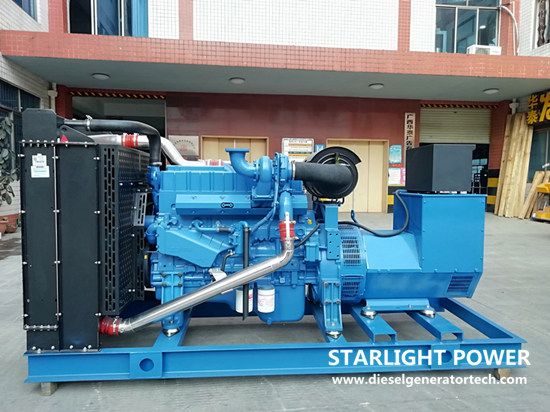When generator working normally, the connection between the stator pole and the rotor pole can be regarded as an elastic magnetic line of force. When increasing the load of generator, power angle will increase, which is equivalent to lengthening the magnetic line of force.
When reducing the load of generator, power angle will reduce, which is equivalent to shortening the magnetic line of force. When the load of generator changing suddenly, the rotor power angle can not be stabilized at a new value immediately due to the inertia of the rotor. However, it goes through several oscillations around the new stable value, which is called the oscillation of synchronous generator.
Oscillation is divided into two types:
1.The amplitude of oscillation becomes smaller and smaller, the swing of power angle gradually attenuates, and finally stabilizes at a new power angle, and still operates stably at synchronous speed, which is called synchronous oscillation.
2.The amplitude of oscillation becomes larger and larger, and the power angle increases continuously until it is out of the stable range, which makes the generator out of step and the generator goes into asynchronous operation, which is called asynchronous oscillation.

Why synchronous generator occurs oscillation?
1.Stator ammeter indication exceeds the normal value and moves violently.
Because the angle between the parallel electromotive forces changes, resulting in electromotive force difference, which makes the generators flow through the circulating current. Due to the swing of the rotor speed, the angle between the electromotive forces is larger and smaller at sometimes, and the torque and power are also larger and smaller at sometimes, so the circulating current is larger and smaller at sometimes, so the pointer of the stator current swings back and forth. This circulating current, together with the original load current, may exceed the normal value.
2.The pointer indication of stator voltmeter and other bus voltmeters is lower than the normal value and oscillates back and forth. This is because the angle between out of step generator and other generators is changing, which causes voltage swing. Because the current is larger than normal, the voltage drop is also large, resulting in low voltage.
3.The active load and reactive load swing sharply. The reason is that the output power of the generator in the oscillation process without out of step is large or small, and sometimes the active power is sent out or absorbed when out of step.
4.The pointer of rotor voltage and current meter swings around the normal value. When the generator is oscillating or out of step, the alternating current will be induced in the rotor winding and fluctuate with the fluctuation of the stator current. The current is superimposed on the original excitation current, which makes the pointer of the rotor ammeter swing near the normal value.
5.The generator gives out a rhythmic sound, which is in step with the swing rhythm of the meter pointer.
6.The current and power indication of unit and line change periodically, but the fluctuation is small, and the active power output of generator is no more than zero.
7.The frequency of the system and generator does not change much, the frequency of the whole system does not increase in one part and decrease in the other part; the noise of the generator is small, and the opening of the guide vane has no obvious change.
How to deal with oscillation of synchronous generator?
1.If it is not caused by the loss of excitation of generator, the excitation current of the generator should be increased immediately to increase the electromotive force of the generator, increase the power limit and improve the stability of the generator. This is due to the increase of excitation current, which increases the tension between the stator and rotor poles, weakens the inertia of the rotor, and pulls the generator into synchronization when it reaches the equilibrium point. At this time, if the generator excitation system is in the forced excitation state, it should not intervene within 1 minute.
2.If it is caused by high power factor of single machine, the active power should be reduced and the excitation current should be increased. This can not only reduce the rotor inertia, but also increase the stable operation capacity of the unit due to the increase of the power limit.
3.After judging that the system is synchronous oscillation, exit the AGC device of the generator set and increase the reactive power output of the generator appropriately.
4.If the oscillation is caused by the fault of the speed regulation system or excitation system of the unit in the plant, the active power output of the unit in fault shall be reduced immediately and the equipment fault shall be eliminated. If the fault cannot be eliminated in a short time, the unit shall be disconnected.
5.If the oscillation is caused by the accident trip of the output line in the plant, the active power output of the unit shall be reduced immediately until the oscillation is eliminated.
6.If the synchronous oscillation is changed into asynchronous oscillation, it will be treated as asynchronous oscillation.
Hope the article is helpful to you when you meet oscillation of synchronous generator problems. We are also a manufacturer of diesel generator set in Jiangsu China, if you are also interested, please contact us by email sales@dieselgeneratortech.com or call us by phone number +8613481024441.
Comments
Post a Comment